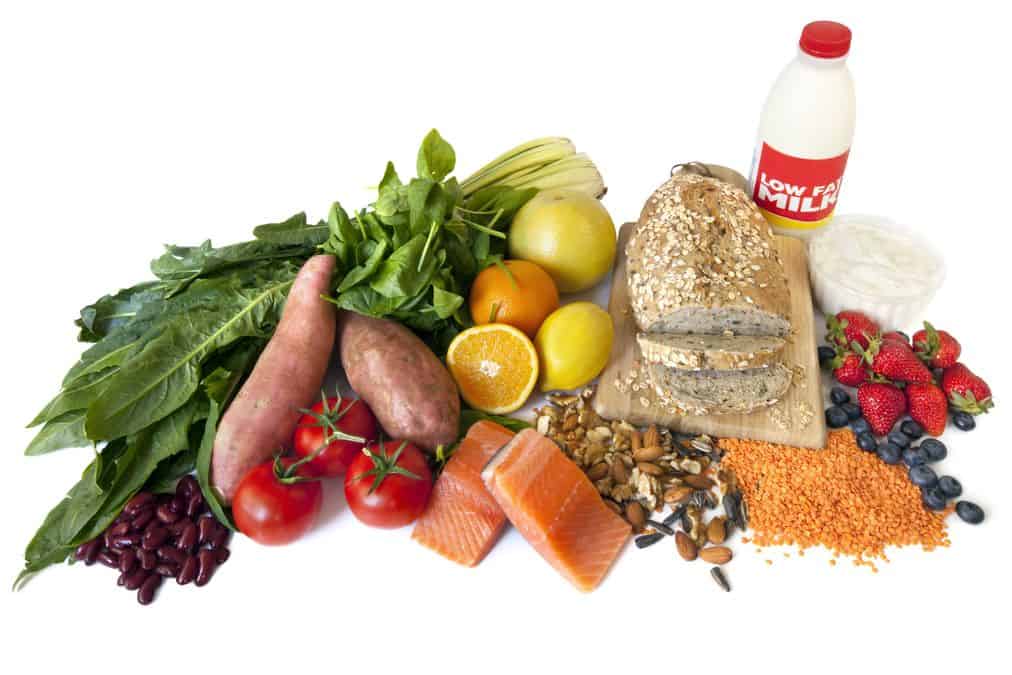
A low glycemic index diet
Low glycemic index diet is one of the most popular diets lately, more and more often offered by restaurants and diet catering companies. For whom is this diet recommended, what are its benefits and what is the glycemic index?
Contents
What is the glycemic index?

GlycemicIndex is a very important indicator in the context of a healthy diet and prevention of many diseases. This parameter allows to classify and order food products on the basis of how their consumption influences the increase of sugar (glucose) concentration in blood, the so-called postprandial glycemia. In scientific writings, the glycemic index is defined as:
“the area under the curve of the glycemic response measured for 2 hours after ingestion of 50 g of assimilable carbohydrate from a test food product, expressed relative to the glycemic response to the same amount of carbohydrate from a standard product such as glucose or white bread.”
It sounds complicated, but in practice it’s not – high GI foods are those that are rapidly digested and cause a rapid rise in glycemia. Similarly, foods with a low glycemic index are digested more slowly and thus cause blood glucose levels to rise more slowly.
Why is the Glycemic Index important?
The glycemic index of our diet largely determines the condition of our endocrine system, and thus the functioning of our whole body. Frequent, large and rapid glycemic fluctuations (and the secretion of insulin, the hormone produced by the pancreas in response to carbohydrate consumption), which occur when we follow a diet with a high glycemic index, are very dangerous to our health. They can cause, among other things, hunger attacks between meals and thus promote snacking, which in turn can contribute to excessive weight gain.
Moreover, a diet with a high glycemic index increases the risk of type 2 diabetes, insulin resistance, metabolic diseases, cardiovascular diseases and even some cancers. It also increases oxidative stress, which causes excessive production and accumulation of free radicals that damage DNA, proteins, and lipids, accelerate cellular aging, and impair immunity.
Low glycemic index diet – benefits. Who is a low glycemic index diet for?
There are manybenefits of a low glycemic index diet. In fact, it is a diet for everyone. First of all, it is recommended for people with diabetes and insulin resistance, as it is the best therapeutic element, and if followed correctly, in many cases it is sufficient and does not require additional pharmacotherapy. Low glycemic index diet is also a diet for people losing weight – it helps to control the feeling of hunger and satiety. People with high blood cholesterol and triglyceride levels and high blood pressure will also benefit from this diet. However, it is also worth taking interest in if we are healthy – then it is one of the best elements of prevention of many diseases in the future.
Glycaemic index of food products

On the basis of the glycemic index value, food products can be divided into those with a low (70) index .
Products with a low glycemic index, i.e. those on which the daily diet should be based, include vegetables, fruits eaten whole, preferably with the skin on, complete sources of protein (fish, meat, legumes) and healthy vegetable fats. Remember that the fruits in this group are raw fruits, eaten whole, with skin and seeds when possible.
The products with a high glycemic index, i.e. the most inadvisable, causing frequent glycemic fluctuations, include mainly highly processed products and those containing large amounts of sugar. These are mainly sweets, white flour, white bread, sugar and honey.
Factors that affect the glycemic index
All products containing carbohydrateswill cause an increase in glycemia and insulin. These are mainly cereals, which are an important part of your diet and you should not give them up! But it’s worth knowing a few tricks to lower their glycemic index:
- cook pasta, rice and groats al dente. After cooking, pour cold water over them;
- choose sourdough bread made of wholemeal flour;
- choose less ripe fruit – bananas with greenish skin will be a better choice than ripe ones with brown skin;
- avoid crushing – it is better to eat fruits whole than in the form of juices, mousses, smoothie, purees;
- add healthy fat and protein to each meal.
- ensure an adequate intake of fibre – from vegetables, fruit and whole grain cereals.
Glycemic index is not everything
In addition to the glycemic index, the glycemic load is very important (and perhaps even more important). The glycemic index is based on a serving of a product that provides 50 grams of carbohydrates. This doesn’t always correspond to the actual amount of that product that we consume in a meal. That’s why glycemic load was invented in order to more accurately assess the impact of food on sugar metabolism. In contrast to the index, the glycemic load tells us how the glycemia changed after a specific portion of a product was actually consumed, so it is a more accurate and precise indicator.
On the basis of glycaemic load, as in the case of the index, food products are divided into three categories: low (20) load. Similarly, the higher the load value, the greater the increase in glycemia and insulin production. In most cases, foods with a high glycemic index also have a high glycemic load. However, this is not always the case. For example, we will use watermelon. It has a high glycemic index (>70). However, this applies to a serving of watermelon that has 50 grams of carbohydrates – the amount found in a watermelon weighing over 1.5 kilograms! It’s rather unlikely to eat that amount at once. A normal serving of watermelon, or about 100g, contains less than 10g of carbohydrates, and the glycemic load of such a serving is low. This means that it will not affect the sugar balance to a great extent. Therefore, it is worth remembering that the portionmatters and you do not have to completely give up any products, but keep moderation and reason .
Principles of a low glycemic index diet
- Try to eat regularly, from 3 to 5 meals a day. The intervals between meals should be about 3-4 hours. Avoid frequent snacking.
- Eat plenty of vegetables – they should be the basis of your diet. Make sure that you eat at least 400 g every day. Potatoes are not included!
- Look after vegetable sources of fats – avocados, nuts, oils, oils, seeds and seeds. Eat a minimum of 2 portions of fish a week. Limit animal fats – butter, fatty meats, full fat dairy.
- Cook pasta, rice and groats al dente! Overcooked starchy foods have a higher glycemic index. Choose whole grain cereal products, avoid white bread and white, processed flour.
- Each meal should contain complete protein – eggs, lean meats, fish and pulses.
- Do not add sugar to your food or drink! This applies equally to white sugar, brown sugar, rose sugar, coconut sugar or organic sugar. You can replace sugar with sweeteners such as erythritol or xylitol.
Sources:
- Gawęcki J.: Żywienie człowieka, podstawy nauki o żywieniu, PWN, 2012
- Włodarek D.: Dietotherapy, PZWL, 2014
- Augustin LSA, et al. Glycemic index, glycemic load and glycemic response: An International Scientific Consensus Summit from the International Carbohydrate Quality Consortium (ICQC). Nutrition, Metabolism & Cardiovascular Diseases. 2015;25:795
- Sun FH, et al. Effect of glycemic index of breakfast on energy intake at subsequent meal among healthy people: A meta-analysis. Nutrients. 2016;8:37
- Smith JD, et al. Changes in intake of protein foods, carbohydrate amount and quality, and long-term weight change: Results from 3 prospective cohorts. American Journal of Clinical Nutrition. 2015;101:1216
- Roder PV, et al. Pancreatic regulation of glucose homeostasis. Experimental and Molecular Medicine. 2016;48:e219



